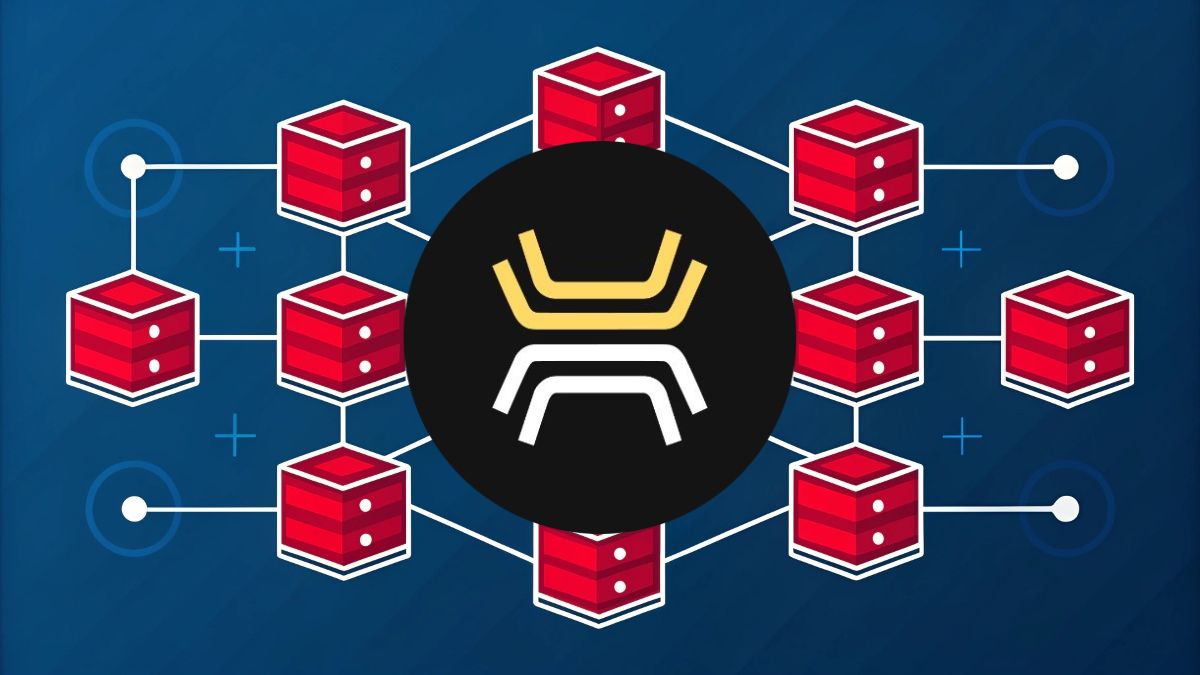Botanix Blockchain: Revolutionizing Bitcoin’s DeFi and Smart Contracts

Botanix: Revolutionizing the Bitcoin Ecosystem with Layer 2 Solutions
Understanding the Botanix Blockchain
Botanix signifies a pivotal advancement in the Bitcoin landscape. As a native Layer 2 solution, it seeks to enhance Bitcoin’s capabilities beyond mere transactions. By incorporating smart contracts and decentralized applications, Botanix broadens Bitcoin’s functionality while maintaining its foundational security and decentralization.
- Understanding the Botanix Blockchain
- The First Decentralized Layer 2 for Bitcoin
- EVM Compatibility: Bridging Bitcoin and Ethereum
- Fostering a Bitcoin-Centric Economy
- Ensuring Decentralization and Security with Spiderchain
- How Botanix Operates
- Two-Way Peg Bridge for BTC Transfers
- EVM Execution Environment
- Orchestrator Nodes and Proof of Stake Consensus
- Spiderchain Security Framework
- The Impact of Botanix on the Bitcoin Network
- Unlocking Programmable Utility
- Reinforcing Bitcoin’s Monetary Primacy
- Scaling Through Off-Chain Execution
- Enhancing Security and Decentralization
- Advantages and Disadvantages of Botanix
- Conclusion
The First Decentralized Layer 2 for Bitcoin
Botanix stands out as the inaugural fully decentralized Layer 2 blockchain, designed to be equivalent to the Ethereum Virtual Machine (EVM) and built directly on Bitcoin. Its mission is to evolve Bitcoin from a simple store of value into a versatile platform for decentralized applications (dApps), smart contracts, and various financial services, all while upholding Bitcoin’s core values of security and decentralization. By aligning its operations with Bitcoin’s base layer, Botanix introduces new functionalities for BTC while safeguarding its reputation as reliable currency.
EVM Compatibility: Bridging Bitcoin and Ethereum
The Botanix protocol offers complete EVM compatibility, empowering developers to launch Ethereum-based dApps, tools, and smart contracts directly on the Bitcoin network. This integration connects Bitcoin’s robust security with Ethereum’s adaptable development environment, facilitating the smooth transition of DeFi protocols, NFTs, and other applications into the Bitcoin ecosystem. Users can engage with these dApps using synthetic Bitcoin, eliminating the need for wrapped tokens or external blockchains.
Fostering a Bitcoin-Centric Economy
The Botanix protocol promotes a self-sustaining Bitcoin economy where BTC serves as the primary medium for transactions, staking, and yield generation. Users can participate in lending, borrowing, trading, and other DeFi activities directly on Bitcoin, negating the necessity to convert BTC into other assets. Initiatives like the BTC-backed stablecoin Palladium, the decentralized exchange Bitzy, and the lending platform Spindle illustrate Botanix’s vision for a comprehensive financial ecosystem powered solely by Bitcoin.
Ensuring Decentralization and Security with Spiderchain
The Botanix blockchain employs its innovative Spiderchain, a decentralized network of multisig wallets overseen by independent operators, to secure BTC deposits and guarantee trustless operations. This architecture distributes custody among dynamically randomized participants, preventing centralized control and reducing single points of failure. By leveraging Bitcoin’s Proof-of-Work finality and integrating forward security mechanisms, Botanix enhances user fund protection while expanding Bitcoin’s capabilities for widespread adoption.
How Botanix Operates
Two-Way Peg Bridge for BTC Transfers
Botanix enables effortless BTC transfers between Bitcoin’s base layer and its Layer 2 through a decentralized two-way peg bridge. Users can secure their native BTC in multisig wallets on Bitcoin, which triggers the creation of synthetic BTC on Botanix for transactions, staking, or DeFi activities. Conversely, burning synthetic BTC releases the original BTC from the multisig vaults, ensuring trustless asset movement without intermediaries or wrapped tokens.
EVM Execution Environment
At its core, Botanix operates a full Ethereum Virtual Machine execution client, allowing for Ethereum-equivalent smart contract functionality on Bitcoin. This environment supports Solidity-based dApps, tools like MetaMask, and the seamless migration of DeFi protocols. Unlike Bitcoin’s UTXO model, Botanix adopts Ethereum’s account-based system, treating transactions as balance changes to ensure compatibility with Ethereum’s development framework.
Orchestrator Nodes and Proof of Stake Consensus
Orchestrator nodes form the backbone of the Botanix protocol, overseeing block production, transaction validation, and multisig wallet security. These nodes stake native BTC as collateral to participate in the network, receiving block rewards in BTC. They are randomly selected for each new multisig wallet creation and face penalties for malicious actions, ensuring decentralized governance that aligns with Bitcoin’s principles.
Spiderchain Security Framework
The security of Botanix relies on the Spiderchain, a self-updating network of multisig wallets distributed across Orchestrator nodes. Each Bitcoin block initiates a new multisig wallet managed by a randomly chosen subset of nodes, while older wallets cryptographically “expire” using forward security. This design isolates past transactions from future key compromises, safeguarding locked BTC even if attackers gain majority control. Finality is derived from Bitcoin’s Proof-of-Work, with Merkle root hashes of Botanix blocks inscribed on Bitcoin for immutable settlement.
The Impact of Botanix on the Bitcoin Network
Unlocking Programmable Utility
Botanix transforms Bitcoin from a mere store of value into a dynamic smart contract platform. By introducing Turing-complete programmability through its EVM layer, it facilitates the operation of DeFi, NFTs, and complex dApps natively on Bitcoin. This innovation addresses Bitcoin’s inherent scripting limitations, attracting Ethereum developers and broadening Bitcoin’s use cases without altering its base-layer protocol or security assurances.
Reinforcing Bitcoin’s Monetary Primacy
In contrast to other Layer 2 solutions that depend on wrapped assets or external tokens, Botanix exclusively utilizes Bitcoin for all network operations. Users transact, pay gas fees, and stake using synthetic BTC, ensuring that Bitcoin remains the sole economic foundation. This design prevents fragmentation, enhances BTC’s liquidity, and strengthens its role as sound money within a flourishing DeFi ecosystem anchored to Bitcoin’s scarcity.
Scaling Through Off-Chain Execution
The Botanix blockchain mitigates Bitcoin’s scalability challenges by processing thousands of transactions per second off-chain while periodically anchoring proofs to Bitcoin. This approach significantly reduces congestion on the mainnet and lowers transaction costs. By shifting computational demands to its Layer 2, Botanix preserves Bitcoin’s streamlined base layer while enabling high-frequency activities like microtransactions and decentralized exchange trading, which were previously impractical on native Bitcoin.
Enhancing Security and Decentralization
The Spiderchain architecture extends Bitcoin’s security model by distributing BTC custody across randomized, slashing-protected Orchestrator nodes. This creates a trust-minimized bridge that eliminates single points of failure and reduces attack vectors compared to centralized custodians. By inheriting Bitcoin’s Proof-of-Work finality and allowing permissionless node participation, Botanix bolsters network resilience while adhering to Bitcoin’s core ethos of decentralization.
Advantages and Disadvantages of Botanix
The Botanix protocol provides Ethereum-like programmability on Bitcoin through EVM equivalence, enabling DeFi, NFTs, and dApps without compromising Bitcoin’s security. It utilizes native BTC for all operations, staking, fees, and transactions, thereby eliminating the risks associated with wrapped tokens. The decentralized Spiderchain architecture enhances security through randomized multisig custody and slashing. Off-chain execution scales Bitcoin sustainably, reducing congestion and fees.
However, the complexity of Spiderchain’s novel multisig mechanics and forward security may confuse users. The reliance on Orchestrator node incentives could lead to coordination challenges if staking participation fluctuates. Additionally, EVM compatibility inherits Ethereum’s smart contract vulnerabilities, necessitating thorough audits. Bitcoin’s slower transaction finality may also delay bridge operations during peak network congestion.
Conclusion
Botanix fundamentally redefines Bitcoin, transforming it from a passive store of value into a programmable powerhouse. It enables DeFi, dApps, and scalable transactions while preserving Bitcoin’s security and decentralization. With its EVM compatibility and BTC-native economy, Botanix bridges innovation with integrity, promising a vibrant future for the Bitcoin ecosystem.







